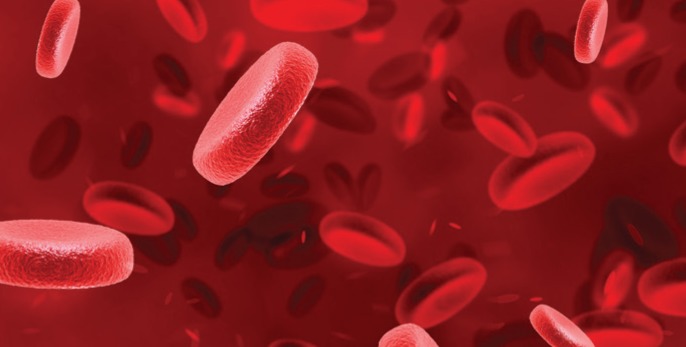The year 2015 saw an explosion of new drugs approved by the FDA and new indications for drugs already on the market for multiple myeloma. Overall, 4 new drugs from 2 new classes were approved in 2015, changing the standard of care for patients with this disease. At ASH 2015, several sessions focused on these developments, and myeloma experts presented new data from a variety of studies, highlighting the implications of these new developments for patients with multiple myeloma.
“This is an extraordinary moment in oncology,” commented Paul G. Richardson, MD, Director of Clinical Research, Jerome Lipper Multiple Myeloma Center, Dana-Farber Cancer Institute, Boston, at a special session at ASH 2015 that focused on the recent drug approvals for myeloma.
“This is a revolutionary time in multiple myeloma,” said S. Vincent Rajkumar, MD, Professor of Medicine, Mayo Clinic, Rochester, MN. The 3 drugs approved in late 2015, “daratumumab, elotuzumab, and ixazomib, promise to change the landscape of treatment and improve overall survival,” he said.
“We have to thank the FDA for approving these drugs so rapidly,” Dr Rajkumar added.
4 Novel Treatments
In February 2015, the FDA approved a new drug for multiple myeloma, with a new mechanism of action: panobinostat (Farydak), the first histone deacetylase (HDAC) inhibitor to receive FDA approval for this malignancy. The accelerated approval of panobinostat was based on the PANORAMA-1 study, which showed that adding panobinostat to bortezomib (Velcade) and dexamethasone resulted in a 4-month increase in median progression-free survival versus bortezomib and dexamethasone.
Then, in November, the FDA accelerated the approval of the first ever monoclonal antibody for multiple myeloma, daratumumab (Darzalex), making it the first immunotherapy to be approved for this disease.
Next, in December, the second monoclonal antibody, elotuzumab (Empliciti), received FDA approval and became the second immunotherapy option available for this patient population. Both daratumumab and elotuzumab harness the patient's immune system to attack malignant cells in the blood.
Finally, also in December, the fourth drug approved for multiple myeloma was the next-generation proteasome inhibitor, ixazomib (Ninlaro), the first oral proteasome inhibitor to become available for this patient population. This approval brings a convenient option to a treatment paradigm that has relied on the intravenous or subcutaneous delivery of available therapies.
Dr Richardson called the monoclonal antibodies “paradigm-changing” agents in myeloma, especially in the treatment of patients with high-risk features. The monoclonal antibodies, said Dr Richardson, “may override the impact of mutations and provide entirely non–cross-resistant strategies, so we can add them to existing drugs.”
New Frontline Option
These 4 new drugs are all indicated for use in advanced disease, but patients who are newly diagnosed with myeloma also gained a new treatment option in 2015, yet another paradigm change. In February 2015, the FDA approved a new indication for lenalidomide (Revlimid) for the frontline setting in combination with dexamethasone.
“The approval of lenalidomide as an option for use in all patients with multiple myeloma represents a new paradigm in the management of this disease,” said Kenneth C. Anderson, MD, Program Director, Jerome Lipper Multiple Myeloma Center, Dana-Farber Cancer Institute. “We now have clinical evidence demonstrating that starting and keeping newly diagnosed multiple myeloma patients on lenalidomide significantly improve progression-free survival.”
S. Vincent Rajkumar, MD.

Paul G. Richardson, MD.

The expanded indication for lenalidomide plus dexamethasone firmly establishes this doublet as the backbone for future regimens, suggested Dr Rajkumar.
New Direction in the Relapsed/Refractory Setting
Discussing the relapsed or refractory setting, Dr Richardson said it remains a challenge. “In myeloma, you can revisit classes of drugs that you previously gave, recognizing that rational combinations of the same drugs make sense as you seek to salvage your patient,” he added. “Tolerability and quality of life should be kept in mind in ensuring patients not only to live longer, but to live well.”
He pointed out that once the disease becomes refractory to a proteasome inhibitor and to an immunomodulatory drug (IMiD), the median event-free survival is only approximately 5 months and overall survival is only 9 months. For these patients, rational combinations and “informed by biology” are critically important, said Dr Richardson.
“The approval of ixazomib and elotuzumab in combination with lenalidomide and dexamethasone, and the accelerated approval of daratumumab, add profoundly to the armamentarium in taking on this challenge,” he added. “The important message is that in the last 3 months, we have 3 very important agents here.”
In addition, in July 2015, the previously FDA-approved proteasome inhibitor carfilzomib (Kyprolis) received a new indication for the relapse setting, in combination with lenalidomide and dexamethasone, in patients who had received 1 to 3 previous therapies.
Triplet Therapy Emerging as Standard of Care
The superiority of triplet therapy over doublet therapy was demonstrated in a study (presented at the meeting by Durie and colleagues), in which the triplet of lenalidomide, bortezomib, and dexamethasone prolonged survival over lenalidomide plus dexamethasone.
Furthermore, although the 4 new agents are indicated for the relapsed or refractory setting, Dr Rajkumar said that their off-label use in newly diagnosed patients will be tempting. For frail or elderly patients with standard-risk myeloma, one could substitute ixazomib for bortezomib (plus lenalidomide and dexamethasone), said Dr Rajkumar. “This is a very simple regimen, as you take just 3 drugs a month, and the side-effect profile is outstanding,” he noted, adding that ixazomib will be useful for patients who cannot take bortezomib.
For patients with high-risk cytogenetics, Dr Rajkumar would consider adding daratumumab or elotuzumab to a triplet regimen in an attempt to treat more aggressively from the start. He cautioned, however, that he would not routinely add monoclonal antibodies to frontline treatment “right out of the box,” because there are side effects and costs associated with this.
In the maintenance setting for patients with high-risk myeloma, Dr Rajkumar would consider ixazomib as an alternative to bortezomib for convenience, and for adding a monoclonal antibody.
The newer IMiD pomalidomide (Pomalyst) may also be a “provocative partner” to these new drugs, said Dr Richardson.
Ixazomib “fits very well” in the relapsed or refractory setting, Dr Richardson said, because of its strong tolerability and convenient once-weekly dosing. It should be very useful in combination with lenalidomide and dexamethasone in patients with high-risk myeloma who need a proteasome inhibitor.
Ixazomib may also be a good partner for panobinostat. Because panobinostat upregulates CD38, it may be an “ideal partner” for the anti-CD38 daratumumab.
Although elotuzumab is approved with lenalidomide plus dexamethasone in the relapse setting, many patients will be receiving maintenance therapy with lenalidomide plus dexamethasone as relapse occurs; therefore, elotuzumab may be useful in combination with a proteasome inhibitor in this setting, he suggested.
Dr Rajkumar said that although daratumumab was approved based on strong single-agent activity, many clinicians would likely use it in combination with lenalidomide or pomalidomide plus dexamethasone. “For second and third relapse, this will be one of our choices,” he said.
Dr Rajkumar and Dr Richardson emphasized that patients with myeloma will likely use all the new drugs at one time or another. Third- and fourth-generation novel agents, new small-molecule inhibitors, and checkpoint inhibitors in the pipeline “will likely all be needed,” Dr Richardson said.



